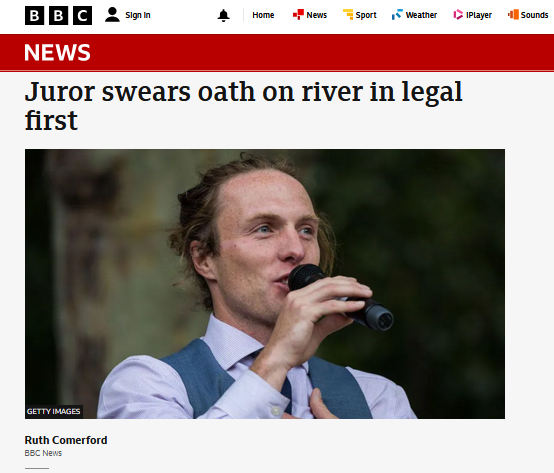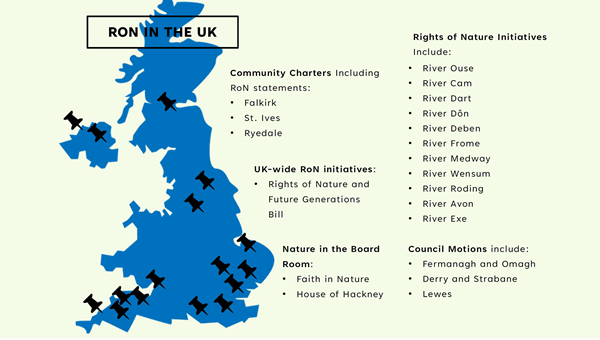The Destruction of Hoad’s Wood – and the need for Rights of Nature

Paul Powlesland tells the tragic story of Hoad’s Wood, used as a landfill and ignored by authorities, and how it shows we need Rights of Nature and guardianship.
It was bluebell time in Kent. Cycling down quiet lanes near Bethersden in the gentle Kentish countryside, I had come to visit an outstanding example of ancient bluebell woodland known as Hoad’s Wood. This woodland is a rare and special place. 200 acres of ancient woodland set in the Garden of England, where smooth sculptural hornbeams vie with statuesque mossy oaks, amidst a vivid blue carpet of bluebells. The wood is precious, reflected in its status as a Site of Special Scientific Interest (‘SSSI’), supposedly one of our strongest legal protections for nature. Visiting the woods in early April, the bird song was a raucous chorus and the perfume from the flowers drifted among the trees. Intermingled with this perfume, however, came a different- more pungent- scent, which I first assumed to be wild garlic. However, glimpses of a towering mound of waste through the spring leaves told me it was actually the smell of one of the UK’s largest illegal waste dumps.
This is the tragic tale of Hoad’s Wood in Kent. It is an infuriating story of the failure of both existing environmental laws and the many authorities tasked with upholding and enforcing those laws. It makes for a sad example of why Rights of Nature, legal personhood and guardianship for Nature is needed: to ensure rare and precious habitats like Hoad’s Wood are properly protected.
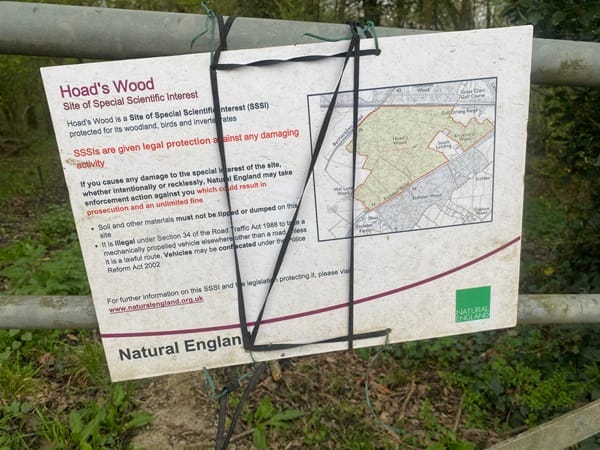
The Story
The story of how Hoad’s Wood came to be so utterly destroyed began decades ago. In the 1970’s, the ancient woodland was divided up into plots of a fraction of an acre each and sold off to the highest bidder. This practice of ‘woodlotting’ brought the most money to the previous owner of the woods – and also left them vulnerable, the interests of the wood themselves completely ignored in the sale. With no single owner, and many lot owners forgetting about their plot, there was no one to prevent destructive activities, or anyone authorities could liaise with or enforce against to stop such activities once they had started or taken place.
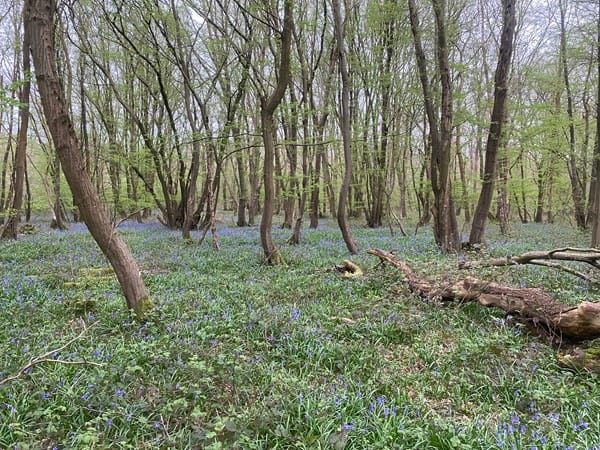
In 2020, a 4-5 acre area of the woods was illegally felled of its trees and cleared of its irreplaceable ground flora. As the woods were an SSSI, all of this destructive activity was illegal and should have resulted in criminal charges to whoever carried it out under section 28 of Wildlife and Countryside Act 1981. The reaction of the authorities, however, was telling. Not only did they fail to stop the felling when it was underway, but they did nothing (e.g. blocking off vehicle access or actively monitoring the site) to prevent further destruction or to start work replanting and restoring the site. Had either the law or the best interests of the woods been followed, by 2023 the woods would have begun to regenerate, with replacement saplings beginning to take hold and re-sown ground flora spreading across the ground. Instead, the cleared sections of the woods were bare, unprotected and ripe for further destruction.
In July 2023, the destruction escalated. A digger arrived to widen the access track and was swiftly followed by 20-30 large trucks a day, each one carrying 15-20 tonnes of waste to be dumped onto the felled area in the heart of the woodland. This barrage of trucks thundering down the narrow country lanes leading to the woodland did not go unnoticed by local residents, and multiple people immediately raised complaints to all the relevant authorities. By the end of July 2023, Kent Police, Ashford Borough Council, the Environment Agency, Natural England, Damien Green MP and Kent County Council were all aware of the situation in the woods. The number and nature of the complaints should have been enough to put these authorities on notice of the seriousness and scale of what was taking place. If not, a short walk into Hoad’s Wood would clearly have confirmed it.

Multiple serious crimes were being committed: running an illegal waste site; destroying an SSSI; traffic violations; illegal tree felling; polluting watercourses; and planning violations. One might have expected that the authorities would do something. Yet they did absolutely nothing. The huge and blatant crime was allowed to continue for six months, by which time 30,000 tonnes of landfill waste onto the ancient woodland.
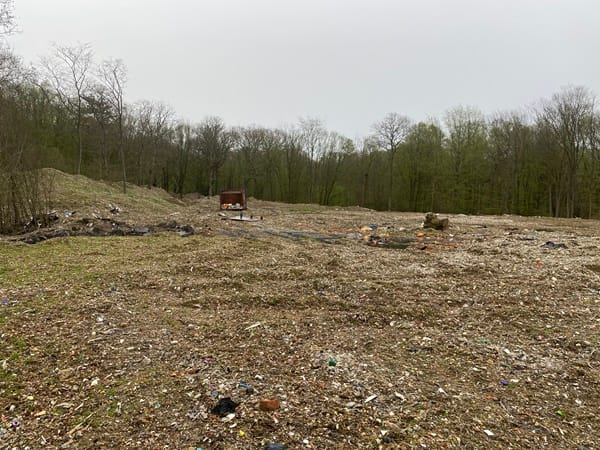
Eventually, in Jan 2023 – and following media interest – authorities finally acted. Closing down the site was reasonably simple in the end: a Restriction Order from Magistrates and a couple of concrete blocks. The question now is why this wasn’t done before the woods were destroyed?
Various excuses were given by the authorities for their failure to act. Particularly shocking is a letter from Kent Police to a local resident in August 2023, stating that in their opinion, no crimes had been committed. Such a response is so at odds with reality (as noted already, multiple crimes were clearly being committed) that it is hard to avoid the conclusion that it resulted either from utter incompetence or some form of mendacity or corruption. Other authorities claimed it was a “a council matter”, whilst the Council claimed it was the responsibility of those authorities, or even that it was an official operation. The Environment Agency has claimed that they needed to let the operation continue for as long as they did in order to collect evidence to prosecute the crimes involved. However, were that the case, surely a week or two of such dumping would provide all the necessary evidence that illegal activity was taking place; why was 30,000 tonnes of rubbish needed in the woods, rather than just 30? There appears to be no rational reason why the Environment Agency let Hoad’s Wood be piled high with waste, and public authorities defrauded of millions of pounds in landfill tax, before they intervened to stop the crime.
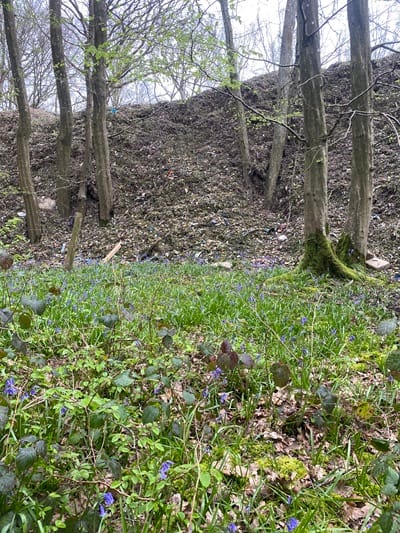
The scale of the dumping has to be seen to be believed: a huge plateau of rubbish at least 12ft high- but over 25ft high in places- stretching across acres of woodland. The rubbish is also decaying, giving off hydrogen sulphide gas which stank of rotting eggs and stung my eyes as I walked. The gas also drifts into nearby homes. The consequences of this illegal dumping are potentially catastrophic for local environment. Rain falling on waste forms putrid stinking black lagoons. The site isn’t sealed, so water containing toxins, heavy metals and pollution runs off into streams, then into nearby River Beult. No one knows what exactly is dumped on site or how dangerous and toxic it might be. By dumping the waste here, the criminals may have avoided millions of pounds in landfill tax.
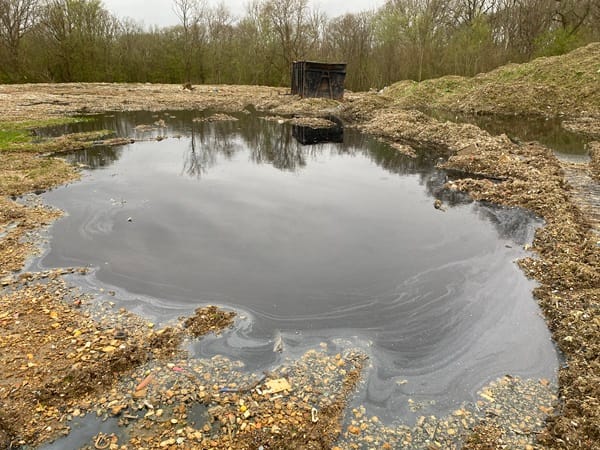
The Need for Rights of Nature and Guardianship
The story of Hoad’s Wood vividly illustrates the failure of both environmental law and our existing environmental protection authorities. It provides a stark case study as to why a Rights of Nature approach is so needed and, in particular, legal personhood and guardianship for nature.
It is clear that there were multiple laws in place that should have protected these woods, yet those laws were not upheld. This is a common problem with laws protecting nature: they are too often seen by the authorities as ‘victimless crimes’. This leads to insufficient action to be taken by the police or other authorities to enforce the law. Furthermore, despite there clearly being non-human victims, there is no guardian or guardianship body who can pressure the authorities to take action or bring legal action in the name of the woods. Whilst it may be possible for a landowner to bring action, they might not be in a position to bring such action, or their interests may not be aligned with those of the woods. Although it may be technically open to affected local residents to bring some form of legal action, this only has limited scope and it would take a brave individual to put a huge amount of time and effort to do this while risking potential adverse cost risks.
This would be very different if the woods had legal personality – legal interests and the ability to bring legal action in relation to these. Giving the woods Rights of Nature would mean granting legal rights such as a right to exist, a right to regenerate as an ecosystem, a right not to be polluted, and a right to be restored. Having these rights would mean that more direct legal action can be taken, whereas currently there are multiple patches of environmental regulation.
With legal personality a guardianship body can be created, directly tasked with looking out for its interests, as has been implemented for many nature entities around the world. These guardians would be able to intervene directly to, for example, prevent the lorries entering the woods, bring judicial review proceedings for the failure of the authorities to act, and bring legal proceedings in the name of the woods against polluters, with appropriate costs protections. Given the numerous unlawful acts that the dumping in the woods amounted to, an injunction would very likely have been granted.
How residents have acted in the last few months shows the huge potential of guardianship. Following the ending of waste dumping in January 2024, local residents have demonstrated the power of taking on a relationship akin to guardianship of the woods. Without further pressure, given their previous performance the authorities would likely have left the rubbish in Hoad’s Wood as a festering rotting pile, leaching into the local environment and preventing the woods being replanted and restored. However, local residents decided they would not let the inaction continue without a fight. They formed the group ‘Rescue Hoad’s Wood’ and demanded that the authorities that failed to do their duty to stop this crime need to put things right and pay for all rubbish to be removed and properly disposed of.
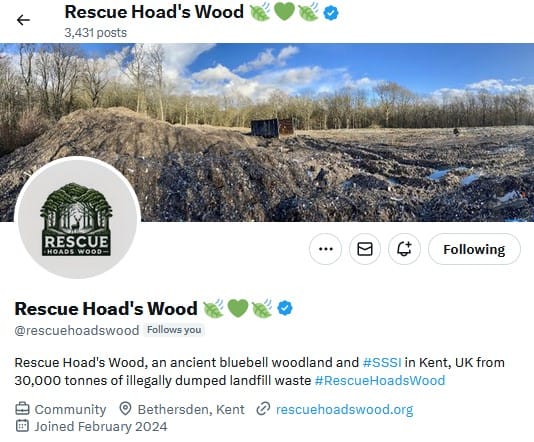
These campaigners have done an amazing job, speaking with a clear and insistent voice on behalf of the woods. Without them it is unlikely that there would be any prospect of existing waste being removed. They have brought its plight into the media spotlight, brought thousands of people to support removal of the rubbish and restoration of the woods, and kept the pressure on public authorities by holding public meetings, writing letters and speaking for the woods. At the most recent public meeting on 18th April, the cost of removing the rubbish and restoring Hoad’s Wood was revealed to be up to £10 million.
It is shocking that a criminal gang has, in effect, been able to steal this from the public purse. But Hoad’s Wood should not be left to suffer under the mound of rubbish due to the cost of the clear up. The new de facto guardians of the woods have set a deadline of one month for the clean up to be agreed and a further month for work on site to begin. Failing this, they intend to bring legal action based on the numerous failings of the various authorities to carry out their statutory duty.
If this is what de facto guardians have been able to do in the current legal regime, imagine what would be possible if they were acting for woods which are granted legal personhood and Rights of Nature. This is our vision: that habitats and ecosystems all around the country have legal rights, with human guardians who can bring cases on their behalf.
Yet there is Hope
The destruction of Hoad’s Wood is both a tragedy for the woods itself and a damning indictment of the failure of both our system of environmental law and the authorities tasked with upholding it. However, although the situation is bad, there is hope. The site can be remediated and restored back to woodland again, if the costs can be paid. But most importantly, the guardianship and love for nature in action that will have led to this result are a shining example of a new way of relating to nature and properly including its voice and interests in our legal system.
You can check out the Rescue Hoad's Wood campaign's website and sign their petition at the links below:




